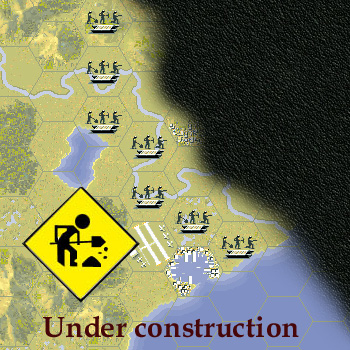 When you move the mouse pointer over the map, unit name, strength and coordinates are displayed as a label. When you press terrain button object name is displayed (city, river, sea, ...) |
Sakhalin
11.8.1945 - 25.8.1945
PacPG: 11.8.1945 - 25.8.1945
Scenario Map:
|
|
|
Changes and corrections of map:
|
Scenario author: Scenario origin: Last revision date: |
stanny |
First release: Revision released: |
- - |
| A new scenario - under construstion. |
Historic overview:
| The Soviet invasion of the Japanese part of Sakhalin island. After Russia lost the Russo-Japanese War the southern part of Sakhalin Island had to be relinquished to Japan. At the end of World War II, the Soviets managed to retake the southern part and rejoin it to the USSR. Article on Czech Wikipedia Article on English Wikipedia
| |||||||||||||||||||
Game play matters:
| Campaign play: This scenario is not part of any campaign, it can be run only as single. |
Scenario data:
|
Map size: 0 x 0 hexes 20 turns, 5 days per turn Version: PacAGPG 2, Starting side: Allies, Campaign: Single scenario, Order in campaign: 0. |
||||||||
|
||||||||
|
||||||||
|
||||||||
|
||||||||
|
Game time costingness of scenario: 49.55 % (product of units and turns numbers divided by difference between the most long and the most short scenario) |
||||||||
|
Number of Allied units: 104 units, from them are 40 core units and 64 auxiliary units 24 air units, 16 naval units and 64 ground units 2 of units are loaded to air transport and 40 to naval transport |
Transports Air/Naval: Allies - Axis 5/45 - 0/0 |
|||||||
|
Number of Axis units: 113 units 16 air units, 2 naval units and 95 ground units 0 of units are loaded to air transport and 0 to naval transport |
Initial prestige + every turn donation: Allies / Axis 500 + 0 / 836 + 118 |
|||||||
|
Max number of Allied units: 109 units, from them are 38 core units and 71 auxiliary units - on start of scenario is possible to purchase 5 unit (-2 core + 7 auxiliary) |
||||||||
|
Max number of Axis units: 118 units - on start of scenario is possible to purchase 5 unit |
||||||||
Transport units:
|
||||||||
| Allied units: |
Axis units: |
The same time period scenarios:
| Manchuria 1945 (PacAGPG 2), Sakhalin (PacAGPG 2), Shumshu (PacAGPG 2), Manchuria 1945 (PacPG 1) |
Battlefield map:
|
|